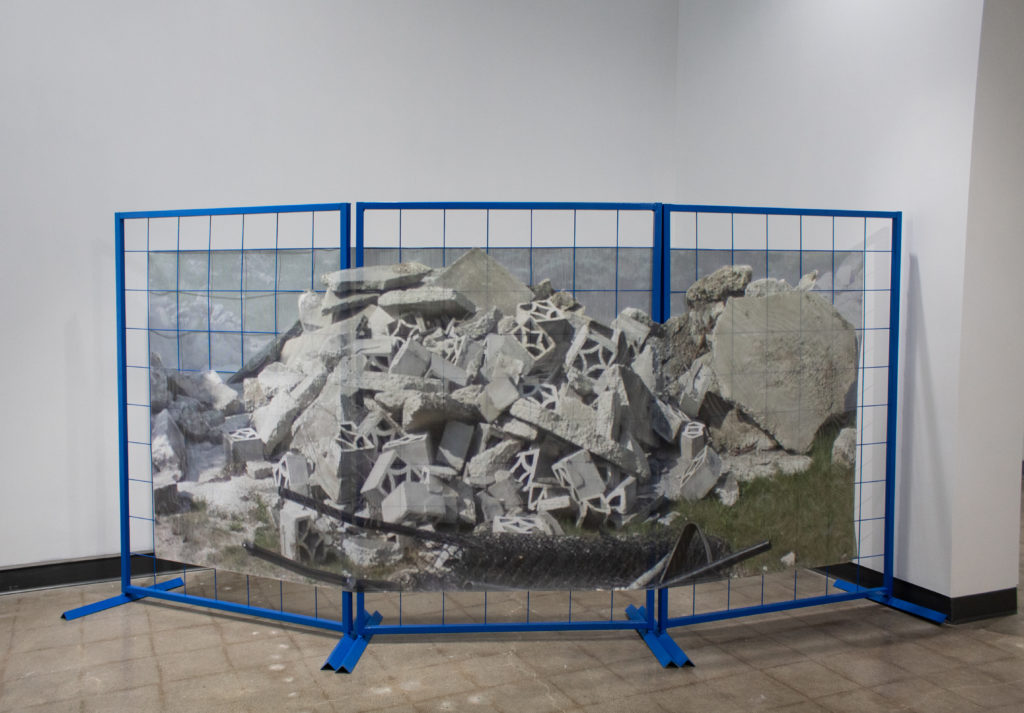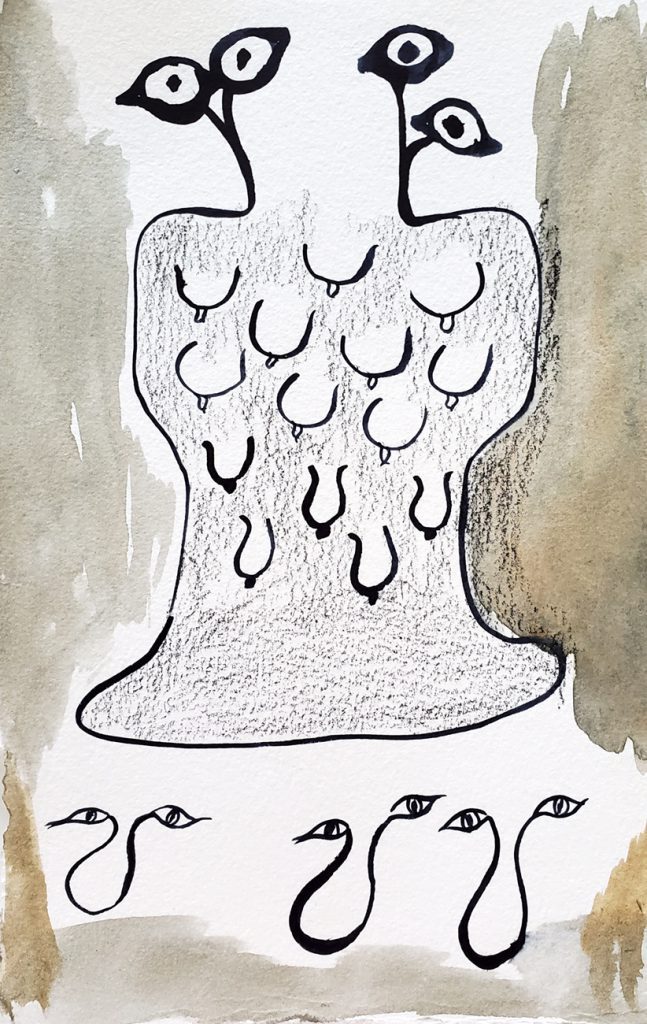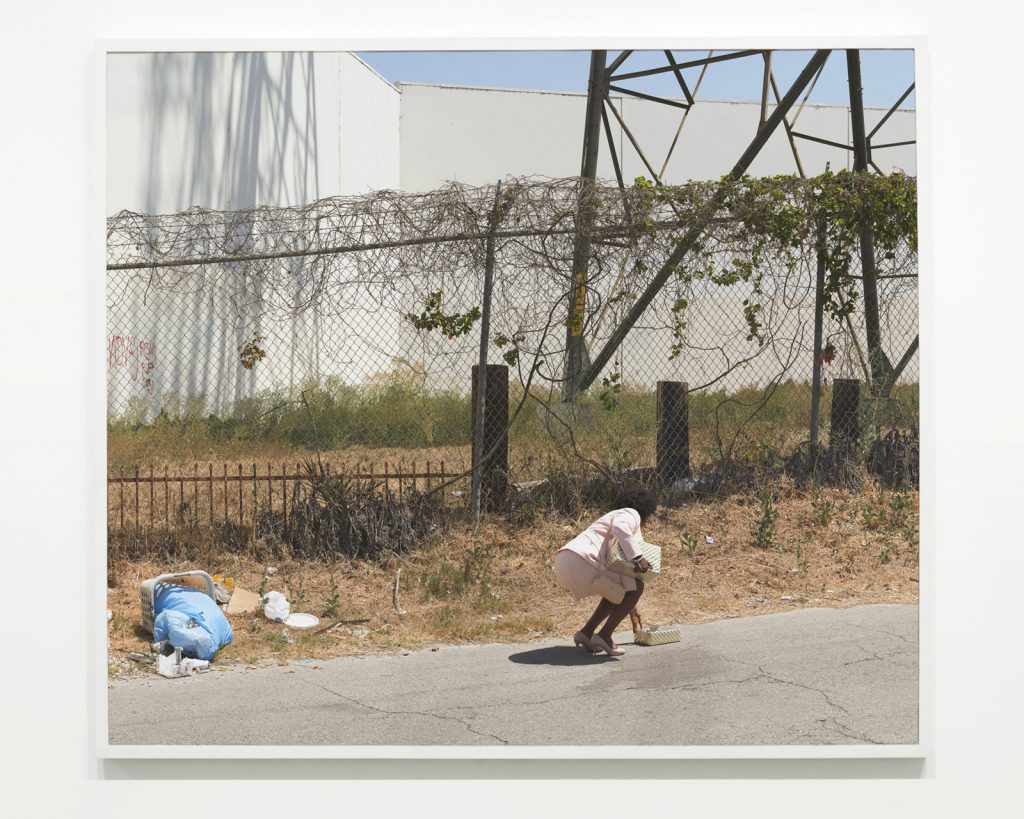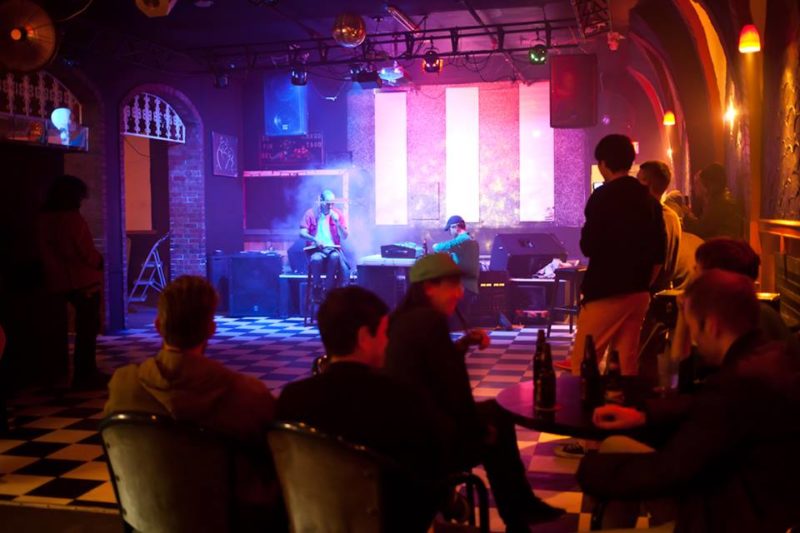
Camouflage, Transformative Goo, and Transness: In Conversation with Sarah Davidson
4 November 2025By Jay Pahre
I first met Sarah Davidson during a queer ecology-themed Banff Centre residency in 2022, where we bonded over our love of hiking, literature, and our mutual interests in queerness beyond the human variety. Throughout our time there, we spent many days out of the studio walking up various mountains and talking about drawing, writing, and being trans in different spaces. Davidson’s practice exists within the genres of painting and drawing, and weaves figurative elements of the natural world together with a rigorous illustrative hand that blends into colourful biomorphic abstraction, complicating the boundaries between bodies, organisms, and forms. This conversation took place in the spring of 2025, while their solo exhibition, Blending In, was on view at Auxier Kline in New York, as well as a group show called Sympathetic Lightning, which was co-curated by Davidson and Nirvana Santos-Kuilan at Springs Projects. My work was included in Sympathetic Lightning, though myself and several other artists in the show were unable to visit the show in the US due to shifting policies around transness and identification at the border. Davidson and I recently joined in conversation to reflect on how understandings of transness and queerness have shifted in the last several years, what art can offer in these re/interpretations, and how in these times, looking for survival strategies from the more-than-human is more resonant than ever.
Continue Reading













